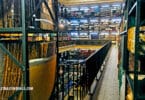When you think of Brazil, the first things that might come to mind are its vibrant culture, beautiful landscapes, and rich history. But beyond the well-known landmarks, Brazil has an incredible history of immigration that has shaped the country in countless ways. If you’re interested in tracing your Brazilian roots, understanding the importance of immigration ports is a great place to start.
The Gateway to a New Life: Brazil’s Major Immigration Ports
Imagine this: It’s the late 19th or early 20th century, and you’ve decided to leave your homeland in Europe, Asia, or even the Middle East for a better life. After weeks at sea, your ship finally docks in a bustling Brazilian port city filled with people speaking different languages and bringing their unique cultures to this new land. These ports were the gateway for millions of immigrants who helped shape the diverse population of Brazil today.
Rio de Janeiro: The City That Welcomed Millions
Rio de Janeiro wasn’t just the capital of Brazil until 1960; it was also one of the country’s most important immigration ports. For many immigrants, Rio was their first introduction to Brazil, and it was here that their journey into the country began.
From the early 1800s to the mid-1900s, Rio de Janeiro saw waves of immigrants from countries like Portugal, Italy, Spain, Germany, and Japan. These groups came for various reasons—some were fleeing economic hardships, others were seeking new opportunities, and many were escaping European wars. The records from Rio de Janeiro are invaluable for genealogy research because they provide detailed information about these early arrivals, including names, ages, occupations, and sometimes even the names of the ships they arrived on.
São Paulo: The Heart of Brazilian Immigration
If Rio was the gateway, São Paulo was the heart of Brazilian immigration. By the late 19th century, São Paulo had become Brazil’s most populous city, attracting immigrants by the millions. The state of São Paulo actively encouraged immigration to work in its burgeoning coffee plantations, and it wasn’t long before the city’s population exploded with newcomers from Italy, Japan, Spain, and Germany.
The most famous of São Paulo’s immigration stations was the Hospedaria de Imigrantes (Immigrant Hostel), which operated from 1887 to 1978. This hostel served as a temporary home for immigrants who had just arrived in Brazil and needed a place to stay before moving on to their final destinations. The records from the Hospedaria de Imigrantes are a goldmine for genealogists, offering insights into the lives of the people who passed through its doors.
Santos: The Port That Fueled Brazil’s Economy
Descubra Raízes Brasileiras
Located on the coast of São Paulo state, the Port of Santos was the busiest and most important port in Brazil during the late 19th and early 20th centuries. As the primary export hub for coffee—Brazil’s most significant economic driver at the time—Santos became a magnet for immigrants.
The Port of Santos played a crucial role in Brazil’s economy, and its immigration records are particularly rich with information about the European and Japanese immigrants who arrived there. Many of these immigrants found work in the coffee industry, either on plantations or in related trades. If your ancestors came through Santos, you might find detailed passenger lists, naturalization records, and other documents that can help you piece together their journey.
What Makes These Ports So Important for Genealogy?
Now that you know a bit about the major immigration ports in Brazil, you might be wondering why they’re so important for genealogical research. The answer lies in the wealth of records that these ports generated. Immigration records are some of the most valuable documents for tracing your family history because they provide key details that can help you connect the dots between generations.
For beginners in genealogy, these records can be particularly helpful because they often include:
• Names: The names of immigrants are usually listed, along with the names of their family members who traveled with them.
• Ages: Knowing the ages of your ancestors can help you estimate their birth years, which is crucial for finding other records like birth or marriage certificates.
• Occupations: Occupation information can give you a sense of what your ancestors did for a living and might even lead you to other records, like employment or union documents.
• Places of Origin: Immigration records often list the country or city your ancestors came from, which can open up new avenues for research in their homeland.
• Ship Names: Knowing the name of the ship can help you find passenger lists, which might include even more details about the journey.How to Access These Records
So, how can you access the immigration records from Rio de Janeiro, São Paulo, Santos, and other ports? The good news is that many of these records have been digitized and are available online through various databases. Here are a few places to start:
• FamilySearch: This free website has a vast collection of Brazilian immigration records, including those from major ports. You can search by name, date, or location.
• National Archives of Brazil: The Arquivo Nacional (National Archives) in Brazil has digitized many immigration records, which can be accessed online or in person.
• Museu da Imigração: Located in São Paulo, the Museum of Immigration offers an online database of records from the Hospedaria de Imigrantes.Getting Started with Your Research
If you’re beginning your genealogical journey, the first step is gathering as much information as possible from your family. Talk to relatives, look through old documents and photos, and try to understand when and where your ancestors might have arrived in Brazil.
Once you have some basic information, you can start searching the online databases for immigration records. Finding what you’re looking for might take some time, but don’t get discouraged—genealogy is often like solving a puzzle, and every piece of information brings you one step closer to completing the picture.
As you dig into the records, remember that Brazil’s history is deeply intertwined with the stories of the people who immigrated there. By learning more about your ancestors’ journeys through these immigration ports, you’ll discover your family’s past and connect with a significant chapter in Brazil’s history.
Check out the following reading material to learn more.






